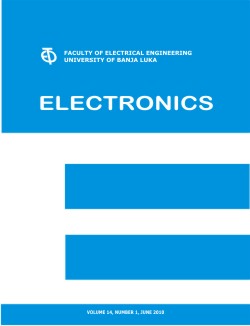Influence of Signal Stationarity on Digital Stochastic Measurement Implementation
DOI:
https://doi.org/10.7251/ELS1317045SAbstract
The paper presents the influence of signal stationarity on digital stochastic measurement method implementation. The implementation method is based on stochastic voltage generators, analog adders, low resolution A/D converter, and multipliers and accumulators implemented by Field-Programmable Gate Array (FPGA). The characteristic of first implementations of digital stochastic measurement was the measurement of stationary signal harmonics over the constant measurement period. Later, digital stochastic measurement was extended and used also when it was necessary to measure time-series of non-stationary signal over the variable measurement time. The result of measurement is the set of harmonics, which is, in the case of non-stationary signals, the input for calculating digital values of signal in time domain. A theoretical approach to determine measurement uncertainty is presented and the accuracy trends with varying signal-to-noise ratio (SNR) are analyzed. Noisy brain potentials (spontaneous and non-spontaneous) are selected as an example of real non-stationary signal and its digital stochastic measurement is tested by simulations and experiments. Tests were performed without noise and with adding noise with SNR values of 10dB, 0dB and -10dB. The results of simulations and experiments are compared versus theory calculations, and comparasion confirms the theory.Downloads
Published
2013-06-15
Issue
Section
Чланци

